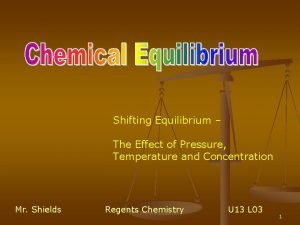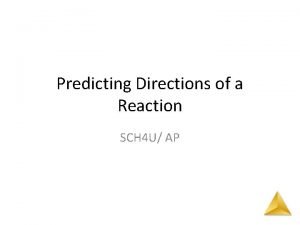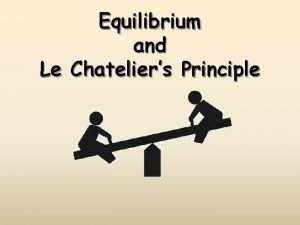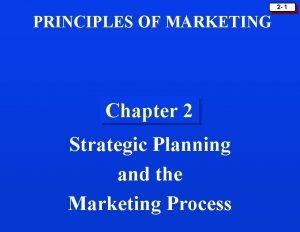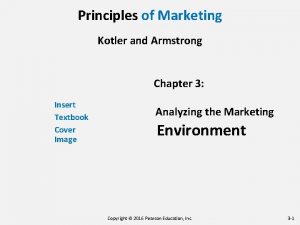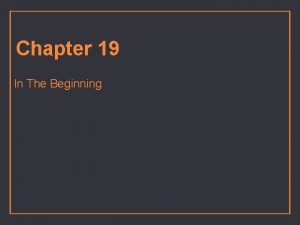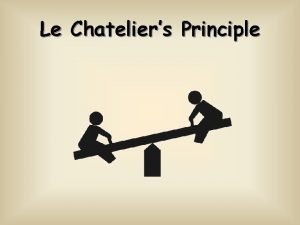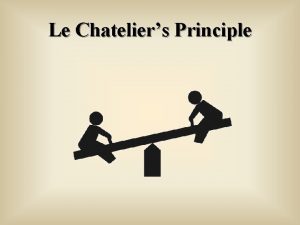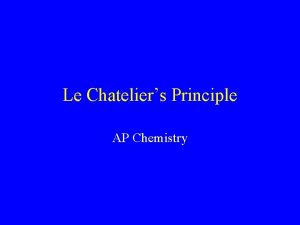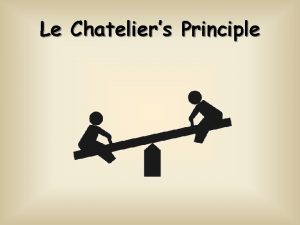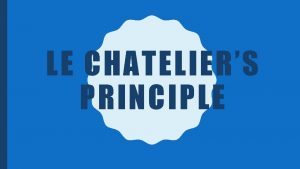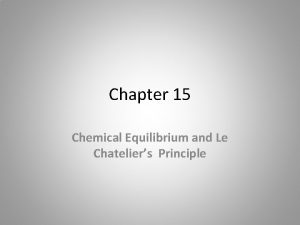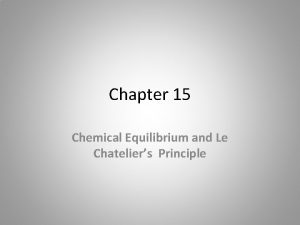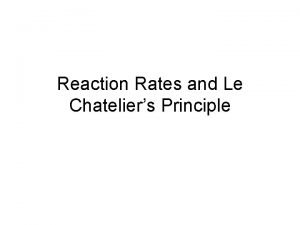Le Chateliers Principle Chapter 11 n n Le










- Slides: 10

Le Chatelier’s Principle Chapter 11

n n Le Chatelier’s Principle states that a system at equilibrium will stay at equilibrium UNLESS it is acted upon externally. If there is an external action, then the equilibrium has to be re-established.

Let us examine the following reaction: a. A + b. B c. C + d. D • At equilibrium, there is a certain amount of A, B, C, D present. • These amounts will remain unchanged UNLESS some external stress is applied. • Let’s see how equilibrium is affected when a stress is applied.

a. A + b. B n n n c. C + d. D Addition of some B If you add more B, then there will be more molecules of B able to react. The forward reaction will be favored and equilibrium will move towards the right. With time, there will be less A, more B, more C and more D present than at the original equilibrium.

a. A + b. B n n c. C + d. D Removal of some A If you remove some A this will cause the reaction to shift towards the left (reactant side). The amount of A will go down, the amount of B will go up and the amount of C and D will also go down.

a. A + b. B n n c. C + d. D Increasing or Decreasing the pressure Pressure for a gas depends on the number of gas particles present. An increase or decrease in pressure will have an effect on equilibrium only when there is a different number of gas particles on either side of the balanced equation.

n n An increase in pressure will favor the side with the fewer gas particles. A decrease in pressure will favor the side with the larger number of gas particles.

a. A + b. B c. C + d. D + Energy Increasing or Decreasing the temperature For an exothermic reaction, an increase in temperature will favor the reverse reaction. (equilibrium shifts to the left) A decrease in temperature will have the opposite effect.

a. A + b. B + Energy n n c. C + d. D For an endothermic reaction, an increase in temperature will favor the forward reaction. (equilibrium shifts to the right) A decrease in temperature will have the opposite effect

n Pressure (due to decreased volume): increase in pressure favors side with fewer molecules. shift right n Catalysts: do not influence the reaction
 Le chatelier's principle temperature and pressure
Le chatelier's principle temperature and pressure Le chatelier principle states that
Le chatelier principle states that Le chatelier's principle class 11
Le chatelier's principle class 11 Principles of marketing chapter 3
Principles of marketing chapter 3 Marketing chapter 5
Marketing chapter 5 Chapter 2 principles of marketing
Chapter 2 principles of marketing Principles of marketing chapter 2
Principles of marketing chapter 2 Chapter 3 principles of marketing
Chapter 3 principles of marketing Examples of agency problems
Examples of agency problems Pleasure principle chapter 15
Pleasure principle chapter 15 Pleasure principle chapter 19
Pleasure principle chapter 19
